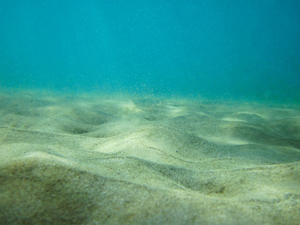Difference between revisions of "Insoluble"
(→Examples) |
|||
| Line 28: | Line 28: | ||
{| | {| | ||
|[[File:SandWaterMixture.png|center|300px]] | |[[File:SandWaterMixture.png|center|300px]] | ||
| − | | style="height:20px; width:300px; text-align:center;" |Sand is referred to as [[insoluble]] in [[water]] because very little can [[dissolve]] in the [[water]]. Only a small amount [[dissolve]]s before the [[water]] is [[ | + | | style="height:20px; width:300px; text-align:center;" |Sand is referred to as [[insoluble]] in [[water]] because very little can [[dissolve]] in the [[water]]. Only a small amount [[dissolve]]s before the [[water]] is [[Saturated Solution|saturated]] with the [[sand]] and the rest sinks to the bottom of the [[water]]. |
|} | |} | ||
Latest revision as of 15:39, 13 December 2019
Contents
Key Stage 2
Meaning
An insoluble material is one that cannot be dissolved in water.
About Insoluble Materials
- Insoluble is the opposite of soluble.
- When an insoluble material is put in water it can still be seen, no matter how much you stir the water.
- An insoluble material will make water appear cloudy.
Examples
| Sand is insoluble because it does not dissolve in water. |
Key Stage 3
Meaning
An insoluble material is one that cannot be easily dissolved in a solvent.
About Insoluble Materials
- Insoluble is the opposite of soluble.
- When an insoluble material is put in a solvent (usually water) it can still be seen, no matter how much you stir the solvent.
- An insoluble material will make the solvent appear cloudy.
- Many materials are soluble in some solvents and insoluble in other solvents.
- Many materials we call insoluble can dissolve in a solvent a small amount but so little that the rest sinks to the bottom of the solvent to form a sediment.
Examples
| Sand is referred to as insoluble in water because very little can dissolve in the water. Only a small amount dissolves before the water is saturated with the sand and the rest sinks to the bottom of the water. |
